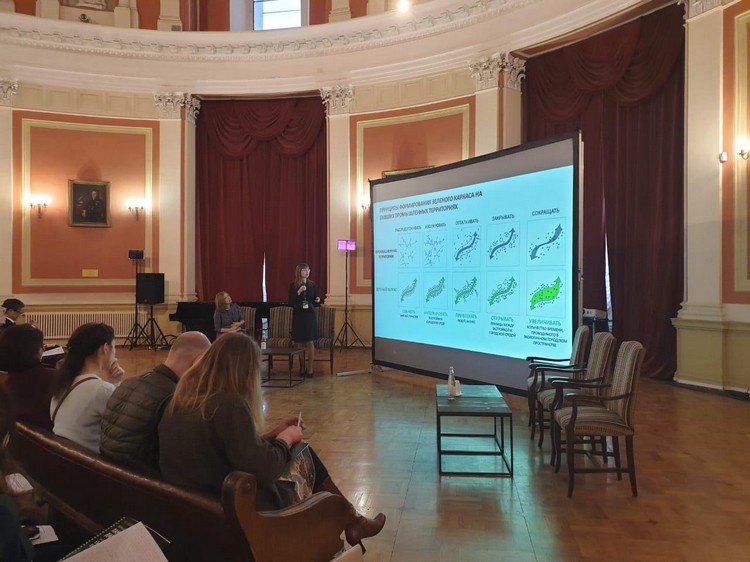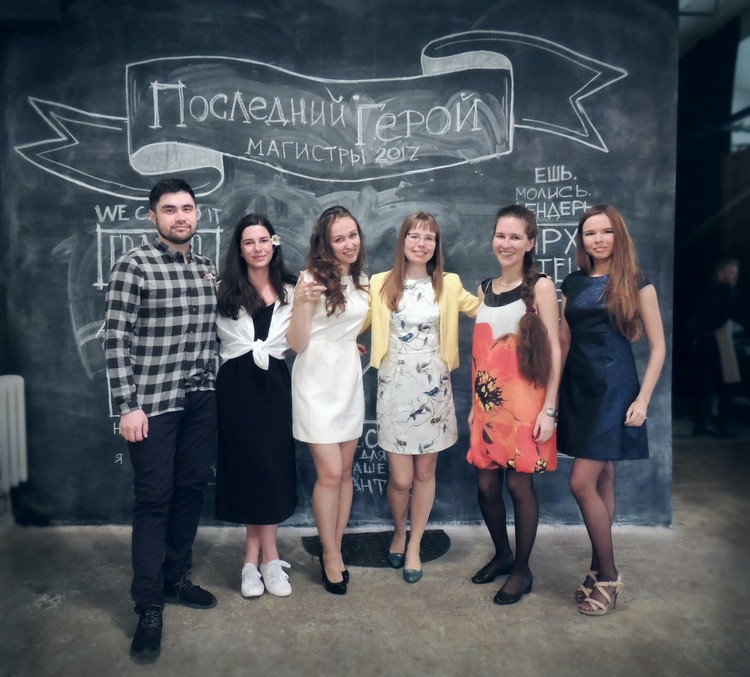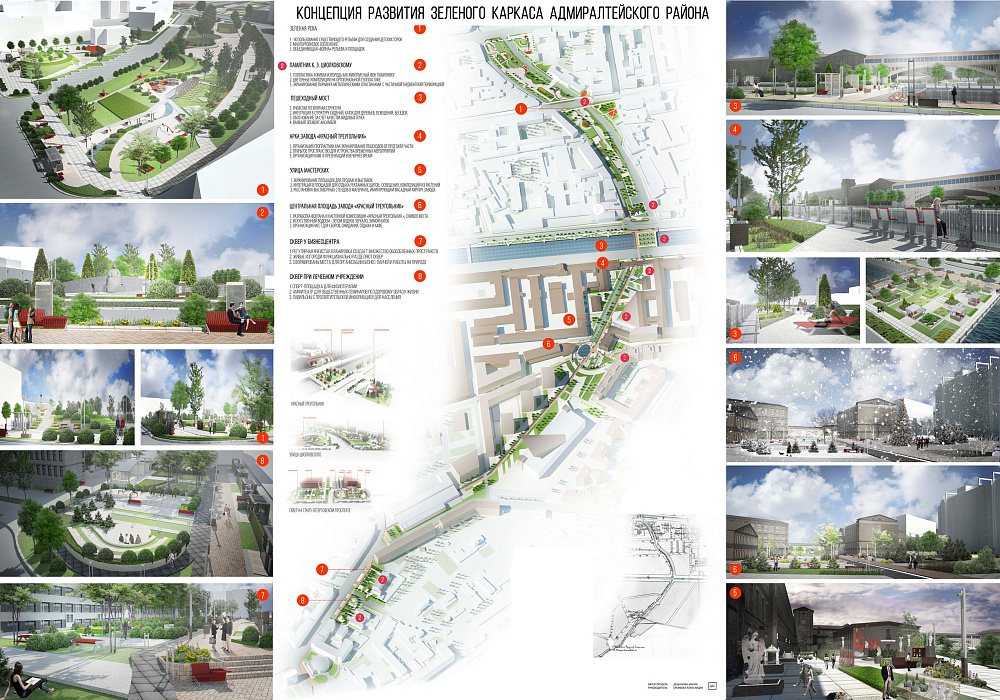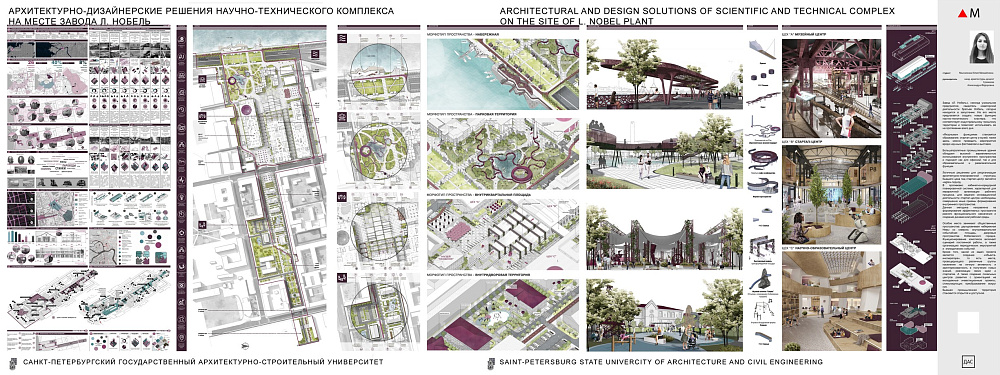“An emotionally rich environment will attract many tourists and local residents”
A.F. Yeremeyeva
with her new
Associate Professor Certificate
Alexandra F. Yeremeyeva graduated from SPbGASU in 2012. Now she is a candidate of architecture, associate professor at the Department of Architectural Design. We talked with Alexandra Yeremeyeva about the present and future of architectural studies, their practical application, working with students and personal research plans.
– How did you come into science, what did your way begin with?
– Interest in scientific architectural research appeared in my last years at the university, when I regularly spoke at conferences at SPbGASU and other venues. Therefore, there was no doubt that it was necessary to continue studies in postgraduate school.
– What topic did you choose for research at the postgraduate school?
– My PhD dissertation was dedicated to the theme of a modern city: the development of business tourism centers in St. Petersburg. The topic came from my practical activities. During my studies, I at the same time worked at the Petropolis-Architecture design organization, which made one of the options for the competitive project of the Expoforum congress and exhibition complex. The theme of the development of new types of tourism is very relevant for our city: it is necessary to provide all-season tourism and present various tourist destinations. As part of my activity, I developed a system of modern complexes for holding congresses and conferences, both large, international-scale events and small corporate events. It was assumed that these centers would become multifunctional and combined with spaces for cultural events, such as, for example, various local festivals.
– What did you do after the graduate school?
– I was invited to teach at the Department of Architectural Environmental Design that had been just recently established at that time. Four years of experience at this department, of course, made an impact on my scientific activity. We are engaged in the study of architectural objects in the context of the urban environment.
This way, a new topic emerged: the development of tourism and tourist routes, not only in terms of building placement and structuring, but also in terms of urban environment.
– Can you give any relevant practical examples?
– At the Department of Architectural Environmental Design, I conduct the diploma guide for graduate students: about ten people have already graduated. Mainly, we were engaged in the development of the potential of the territories of the St. Petersburg "industrial belt” which involved the creation of new architectural objects and public spaces. Several completed final qualification works were noted at the Russian and international levels. The graduation work of Maria Dyubanova on the “Concept for the development of the green frame of the Admiralteysky district” received the Archiprix Landscape Award. Yulia Myznikova’s work on the “Architectural and design solutions of a scientific complex at the site of the Ludwig Nobel factory” was presented among the best works at the Zodchestvo festival in Moscow in 2019 and received a laureate diploma in the competition of the Interregional Public Organization for the Promotion of Architectural Education (MOOSAO). These graduation works were presented at the City Landscape Design Conference organized by the St. Petersburg Committee for Urban Planning and Architecture. Besides this, this year, two textbooks were written on the basis of my research were published and marked with diplomas at the educational literature competition.
{gallery name="Еремеева интервью 122019"}
– What is the relevance of the concepts for the development of the "industrial belt"?
– It is important because in the area, which is located between the historical center and the 20th century districts, there are many factories and plants that are objects of cultural heritage. However, in the process of changing production technologies, these spaces ceased to function and meet the present-day requirements. Many enterprises were closed for technological or economic reasons in the 1990s. Therefore, they are subject to revitalization and re-functionalization, i.e., transformation under a new function of cultural and business sites. It is important to develop them together with the environment: the industrial landscape is emotionally saturated and can attract many tourists and local residents.
– It turns out that the Etazhi Loft Project functioning in the space of a former factory is an example of exactly such revitalization?
– Yes. Another recent successful example is the Sevcabel Port cultural and business complex, created on the territory of the cable plant.
– Are your students currently involved in the design work?
– Yes, this academic year we continue to develop further scientific and design activities. New spheres have appeared, and one of them is the development of the tourism potential of Kronstadt. The topic is relevant and coincides with the development strategy of St. Petersburg.
One more line is the Arctic tourism.
Since this year, I have been carrying out scientific supervision of the candidate dissertation of Yana Yelizarova, who writes about the formation of architectural complexes for this type of tourism. This is also a relevant field, because the potential in the development of the Arctic in Russia is very large. As we found out, one of the most popular tourist Google requests in winter is “Where can I see the Northern Lights”. However, the neighboring Scandinavian countries have a better developed infrastructure for this than in Russia: they have hotel complexes, convenient routes. In our country, unfortunately, at the moment, this line is underdeveloped and therefore even Russian tourists prefer to go abroad to see the Northern Lights, although our Arctic is vast and its landscapes are diverse, each beautiful in its own way.
– Are any real works in the line of Arctic tourism carried out or this it just theoretical research so far?
– A team of several graduates is working on this topic creating concrete architectural complexes, both housing and complexes for extreme types of tourism, and for the environmental tourism. My postgraduate student and I oversee this project. In other words, we conduct research, and students will present specific architectural developments.
The team collaborates with the Commission on Arctic Matters under the Union of Architects and attracts experts in northern architecture as consultants, that is, it uses the experience gained by past generations and updates it to the needs of our time.
– It is known that SPbGASU students took part in the development of a digital model of the 18th block of Kronstadt on the basis of the Smart City concept. Do your graduates collaborate with the Design Office?
– Yes, we cooperate with them, but if the Smart City offers specific developments based on information technology, the team of the Faculty of Architecture is engaged in the development strategy, i.e., the general plan of Kronstadt, studying the possibility of the appearance of new buildings, embankments, boulevards. Our team is responsible for the theme of tourist sites and spaces.
– In your opinion, does this strategy have got a chance for implementation? Will there be new buildings in Kronstadt, new embankments and boulevards?
– It will depend on many circumstances. However, the first developments were presented to the Governor for Economic Development of St. Petersburg, Head of the Strategic Development Management of the Kronstadt District of the St. Petersburg Design Office.
– Do you plan to submit grant requests on this topic with your team?
– At the moment, we’ve received internal grants from SPbGASU. Now, we plan to apply for city and federal grants for further developments on the topic.
Alexandra F. Yeremeyeva is the author of more than 20 articles, including in journals indexed by Scopus. Her publications include:
Formation of innovative public spaces in industrial areas
Methods of the development of pedestrian traffic routes in the historical center of Saint Petersburg
Interviewed by Alexandra Podolnikova
✔ Learn more about the Department of Architectural Design, its teachers and achievements













